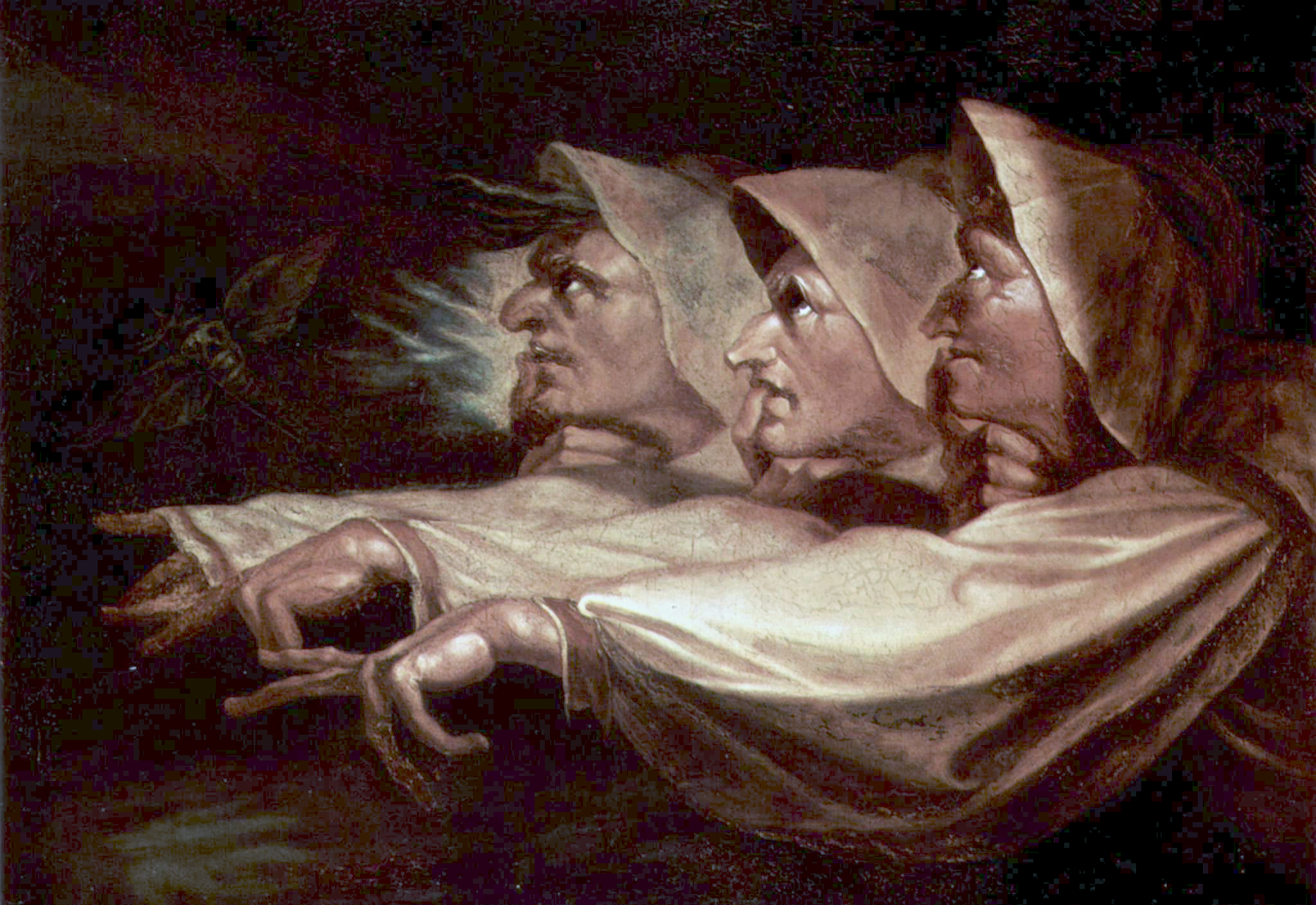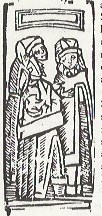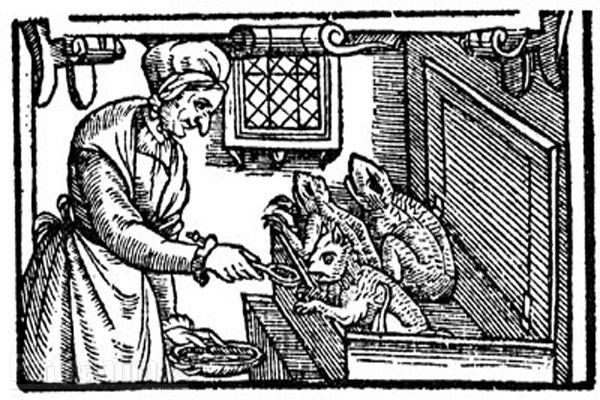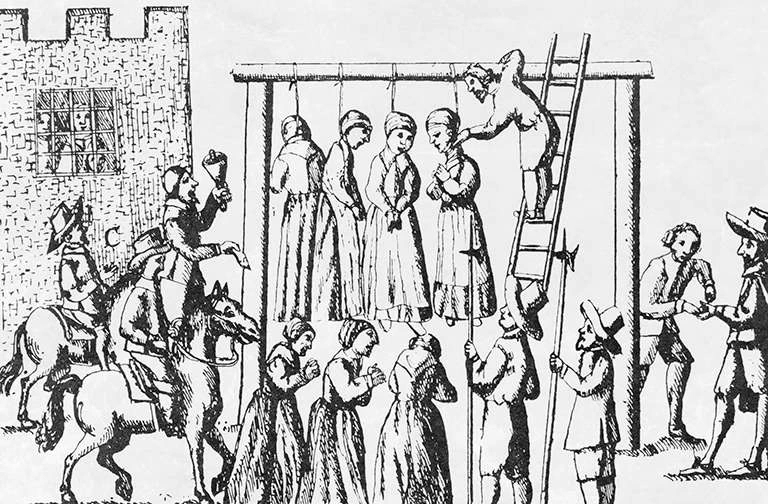Agnes Waterhouse (c. 1501/02 – 29 July 1566), or Mother Waterhouse, was an elderly woman from Hatfield Peverel in Essex, accused, convicted and executed for witchcraft in July 1566,[1] the first under the Witchcraft Act Series of Acts passed by the Parliaments of England and Scotland making witchcraft a secular offence punishable by death. passed three years earlier.
Series of Acts passed by the Parliaments of England and Scotland making witchcraft a secular offence punishable by death. passed three years earlier.
Together with her eighteen-year-old daughter Joan or Jone, Agnes was implicated by her younger sister, Elizabeth Francis English woman tried three times for witchcraft, hanged in 1579 for bewitchment and murder by witchcraft., who also faced charges. Elizabeth informed her interrogators she had given her familiar
English woman tried three times for witchcraft, hanged in 1579 for bewitchment and murder by witchcraft., who also faced charges. Elizabeth informed her interrogators she had given her familiar Demonic spirit who attends upon a witch, possessing magical powers that can be used for good or evil. Often taking the form of a small animal such as a cat. – a cat named Sathan – to Agnes. The pair were close neighbours in the small village of Hatfield Peverel, five or six miles to the north-east of Chelmsford in Essex, where the case was heard.[1][2]
Demonic spirit who attends upon a witch, possessing magical powers that can be used for good or evil. Often taking the form of a small animal such as a cat. – a cat named Sathan – to Agnes. The pair were close neighbours in the small village of Hatfield Peverel, five or six miles to the north-east of Chelmsford in Essex, where the case was heard.[1][2]
The impoverished sixty-four-year-old Agnes admitted being given the feline in return for a piece of one of the cakes she was baking, adding that Elizabeth passed on instructions of how to care for the cat that she had initially received from her grandmother, Mother Eve.[3] Agnes, whose details are recorded in the contemporary pamphlet “The examination and confession of certaineFirst pamphlet describing witchcraft trials in England; it covers the testimony of witches at Chelmsford Assizes in 1566.
Wytches at ChensfordeFirst pamphlet describing witchcraft trials in England; it covers the testimony of witches at Chelmsford Assizes in 1566.“, confessed to first having the creature kill one of her own pigs to test what it was capable of, before having it kill the livestock of other villagers with whom she had disagreements. Sathan slept in a pot lined with wool, but she needed the wool for other things so successfully prayed for the familiar to be changed into a toad instead. Several other malicious tasks performed by the feline on her behest are also listed.[4] She rewarded Sathan for this work by allowing the cat a drop of her blood, or sometimes with some chicken. Agnes pleaded guilty to triggering a bout of dysentery in her neighbour, William Fyne (or Fynee) on 1 October 1565, resulting in his death the following month.[5][a]Peter Maxwell-Stuart gives the year as 1563;[5] it is generally noted by others such as Robbins and Cockburn as 1565,[6][7] or indicated as the year before the trial.
Evidence against Agnes was provided by her daughter, Joan – who was also charged with witchcraft but acquitted – and a neighbour’s twelve-year-old child, Agnes Brown.[1] By the time of the child’s testimony, the familiar had undergone another transformation; rather than a toad it now took the guise of a black dog with an ape-like face resplendent with two horns and it wore a chain and silver whistle around its neck.[8]
Agnes was convicted of causing death by witchcraft; she was hanged days later at Chelmsford on 29 July 1566.[1] According to the pamphlet, immediately prior to her execution she implored God for forgiveness, confessing to using witchcraft for fifteen years and attempting to use Sathan to harm another villager but, due to the man’s particularly strong religious conviction, the familiar was unsuccessful. She also admitted that she used Latin for prayers.[9][b]Using Latin for prayer was seen as ungodly and a lingering sign of Catholicism.[1]
Modern interpretations
The trial of the three women in 1566 was the first to be prosecuted under the Witchcraft Act 1563 Series of Acts passed by the Parliaments of England and Scotland making witchcraft a secular offence punishable by death., which demanded the death penalty only if harm had been caused, maleficiumAct of sorcery, historically usually performed by a witch, intended to cause harm or injury.; lesser offences were punishable by a term of imprisonment. Agnes was consequently the first person to be executed as a witch in England under that Act.[10]
Series of Acts passed by the Parliaments of England and Scotland making witchcraft a secular offence punishable by death., which demanded the death penalty only if harm had been caused, maleficiumAct of sorcery, historically usually performed by a witch, intended to cause harm or injury.; lesser offences were punishable by a term of imprisonment. Agnes was consequently the first person to be executed as a witch in England under that Act.[10]
At the time of Agnes’s trial, the idea of witchcraft being almost exclusively about pacts with the Devil had not yet taken hold in England; that did not happen until around 1600.[11]
See also
- Witch trials in early modern England
 History of witch trials in England from the 15th to the 18th century.
History of witch trials in England from the 15th to the 18th century.

